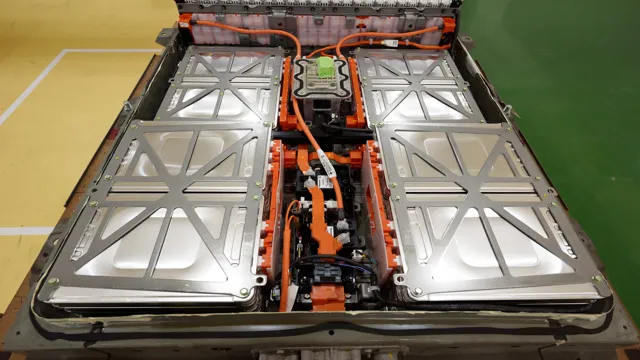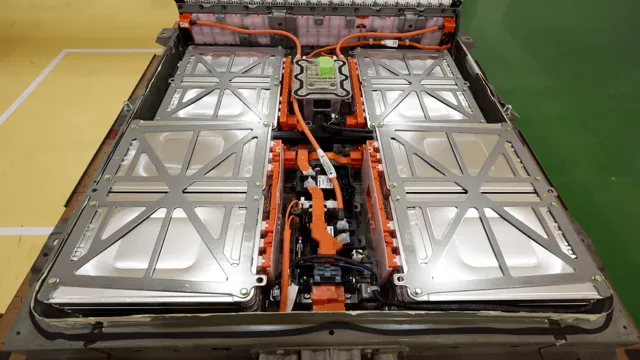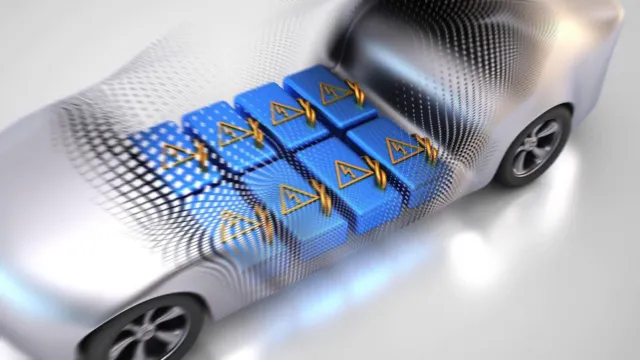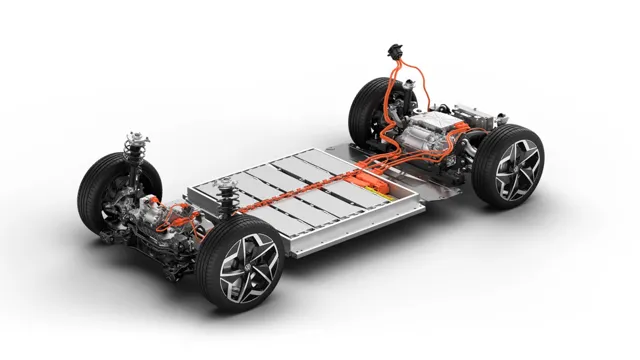The Spark of Innovation: Exploring the Fascinating World of Electric Car Battery Connections
Have you ever wondered how an electric car’s battery connects to the vehicle’s system? Well, wonder no more! The electric car battery connection is a crucial component that enables an electric vehicle to function properly. It’s the link between the battery and the vehicle, transmitting power from the battery to the various systems that need it. Without a proper connection, the battery won’t be able to supply power to the vehicle, resulting in a malfunction.
Think of the electric car battery connection as a pipeline that delivers water to your home. If the pipeline is damaged or disconnected, the water won’t reach your faucets, leaving you thirsty and frustrated. In the same way, if the electric car battery connection is faulty, the vehicle won’t be able to operate as intended, leaving you stranded on the road.
So, how does the battery connection work? In essence, it’s a simple yet sophisticated mechanism that involves several parts, including the battery pack, the battery management system, the inverter, and the electric motor. These parts work together to ensure that the energy stored in the battery is distributed to the vehicle’s motor. In this blog, we’ll dive deeper into the electric car battery connection, exploring its role in an electric car, its components, how it works, and some common issues that can arise.
By the end of this article, you’ll have a better understanding of the electric car battery connection and its importance in the world of electric vehicles. So, let’s get started!
Introduction
Electric car battery connection is a crucial aspect of electric vehicle technology. It refers to the method by which the battery connects to the electric motor to convert electrical power into mechanical power. A well-designed battery connection ensures a reliable and efficient energy transfer, which is essential for the smooth functioning of an electric vehicle.
The type of battery connection used may depend on various factors, such as the type of battery, the size of the vehicle, and the power requirements. In most cases, electric car batteries are connected in series to increase the voltage, thereby improving the overall efficiency of the system. The development of reliable and efficient battery connection technology is opening up new possibilities for the future of electric cars and accelerating the transition to a cleaner, greener future.
Understanding Electric Car Battery Connection
Electric car batteries are a vital component of electric vehicles, allowing them to operate without the need for gasoline. These batteries store electric energy that powers the motor and other vehicle systems. However, connecting the battery to the rest of the car’s electrical system is a crucial step in the process that needs to be done with care.
The battery connections need to be secure and robust, as they are responsible for transmitting electricity from the battery to the rest of the vehicle. Loose or damaged connections can result in a variety of issues, such as weakened performance, erratic behavior, or even a complete power outage of the vehicle. It’s essential to comprehend how electric car battery connections work to ensure optimal performance and operational safety.
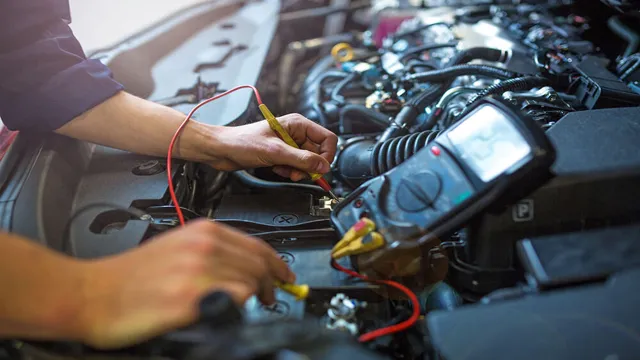
Mistakes to Avoid When Connecting Electric Car Batteries
As electric cars become more prevalent, it’s important to know how to connect the batteries correctly. However, there are some common mistakes that people often make when connecting electric car batteries. One of the biggest mistakes is not properly labeling wires or cables.
This can lead to confusion and can cause a short circuit or even damage to the battery. Another mistake is not checking the polarity of the battery before connecting it. This can cause the battery to discharge or even explode.
It’s also important to avoid mismatching the voltage levels of batteries when connecting them in a series. Doing so can damage the batteries and may even lead to an electrical fire. By avoiding these mistakes and taking proper precautions, you can safely and efficiently connect electric car batteries for optimal performance and longevity.
Wiring Electric Car Batteries
Electric car battery connection is a crucial aspect of the wiring process that ensures safe and efficient use of the vehicle. Electric car batteries typically come in modules that need to be connected in a particular order using specialized connectors. The most common type of connection is the parallel configuration, which connects the positive terminals with the positive terminals and the negative terminals with the negative terminals.
This effectively increases the overall capacity and provides a stable voltage output. However, it’s essential to ensure that the wiring connections are secure and free of any damage or corrosion to prevent any potential safety hazards. Proper installation of the electric car battery connection also involves cable management, which ensures that the cables are correctly routed and secured to prevent any short circuits.
By following the correct wiring procedures and adhering to safety guidelines, electric car owners can enjoy the benefits of a reliable and efficient electric vehicle that’s both eco-friendly and cost-effective in the long run.
Step-by-Step Guide to Wiring Electric Car Batteries
Wiring Electric Car Batteries When it comes to wiring electric car batteries, there are a few steps you need to take to ensure everything goes smoothly. The first step is to determine the voltage and capacity of the batteries you will need. Once you have selected your batteries, you will need to connect them in series or parallel depending on your desired voltage and capacity.
It is important to note that when wiring in series, the voltage increases, while wiring in parallel increases the capacity. After selecting your wiring method, the next step is to connect the batteries using the appropriate cables and connectors. It is crucial to use the correct gauge wire and connectors to ensure your battery system operates efficiently and safely.
Always triple check your connections to ensure they are secure and tight. Next, you will need to add fuses and circuit breakers to your wiring system. Fuses and breakers protect your system from damage due to electrical faults.
Be sure to match the fuse or breaker to the cable size. Finally, when all the wiring is complete, you will need to test your system to ensure it is working correctly. You can use a multimeter to test the voltage on each battery and across your system.
If all is working properly, congratulations! You have successfully wired your electric car batteries. With proper installation and maintenance, your electric car battery system should provide years of reliable service.
Choosing the Right Wires for Your Electric Car Battery Connection
Wiring electric car batteries can be a bit tricky, but it is an important step in ensuring that your vehicle runs smoothly and effectively. When choosing the right wires for your electric car battery connection, there are a few things to keep in mind. Firstly, it is important to select wires that can handle the high amount of current that an electric car battery produces.
This means that they should be able to carry a lot of electricity without becoming overheated or experiencing voltage drop. Additionally, it is important to choose wires that are the correct gauge for your particular battery and vehicle. Using wires that are too thin could lead to voltage drop and potentially even damage to your battery and vehicle.
On the other hand, using wires that are too thick could be unnecessary and add extra weight to your vehicle. So, when you are selecting wires for your electric car battery connection, be sure to choose ones that are the correct gauge and can handle the amount of current that your battery produces. This will help to ensure that your electric vehicle runs smoothly and safely.
Tips for Ensuring Safety While Wiring Your Electric Car Batteries
Wiring Electric Car Batteries When it comes to wiring your electric car batteries, safety should always be a top priority. Proper wiring ensures your batteries function efficiently and without risk of potential hazards. Before you start, it’s important to ensure you have the right tools, including wire cutters, crimpers, and heat shrink tubing.
Additionally, you should wear safety gear such as gloves and eye protection to avoid injuries. Before wiring your electric car batteries, it’s essential to understand the technical and safety aspects involved. Make sure you follow all instructions as provided by your vehicle’s manufacturer, and double-check all connections and wiring to avoid errors.
Lastly, always perform electrical work in a well-ventilated area and avoid working with wet hands. Following these tips will not only ensure your safety, but it will also help you get the most out of your electric car batteries.
Battery Management System for Electric Cars
If you’re wondering how an electric car battery connects to the vehicle’s overall system, it all comes down to the battery management system (BMS). The BMS is responsible for controlling the flow of energy between the battery cells and the rest of the electric car’s components. This includes regulating energy output and protecting the battery from overcharging or overheating.
Without a proper BMS, an electric car battery can quickly become damaged, which can impact the overall performance and lifespan of the vehicle. As electric cars become more popular and advanced, the development and maintenance of efficient BMSs become critical for achieving optimal performance and ensuring driver safety.
Understanding the Importance of Battery Management System
Battery Management System As electric cars become more common, the importance of a properly functioning battery management system (BMS) cannot be overemphasized. The BMS is responsible for overseeing the health and performance of the vehicle’s battery pack – ensuring that it remains in the best possible condition while providing accurate information about its state of charge and overall capacity. Without a reliable BMS in place, electric car owners may encounter a variety of issues – including reduced vehicle range, damage to the battery pack, and even complete failure of the system.
A well-designed BMS can help prevent these problems by constantly monitoring the battery’s performance and making necessary adjustments to keep it within safe operating parameters. So if you own an electric car, make sure to pay close attention to the condition of your battery management system – because it could mean the difference between a smooth, trouble-free ride and a costly repair bill down the line.
How to Choose the Right Battery Management System for Your Electric Car
Choosing the right battery management system (BMS) is crucial for the performance and longevity of an electric car. The BMS ensures that the battery is charged properly, protects it from overcharging and over-discharging, and monitors its temperature and health. When choosing a BMS, it is important to consider the size and chemistry of the battery, the voltage and current requirements, and the desired features such as communication protocols, data logging, and cell balancing.
It is also important to choose a reliable and reputable BMS supplier who can provide technical support and warranty. Ultimately, the right BMS can optimize the performance and safety of your electric car and extend the lifespan of its battery, making it a worthwhile investment.
Conclusion
In summary, the electricity that powers an electric car is ultimately only as good as the connection between the battery and the car’s motor. It’s the link that sparks the energy and sets the wheels in motion. So, just like in any relationship, it’s important to have a strong and reliable connection.
Because at the end of the day, it’s all about the chemistry between the two.”
FAQs
How does an electric car battery connect to the vehicle’s system?
An electric car battery connects to the car’s system through a series of wires and connections. Typically, there are three main components: the battery management system, the inverter, and the motor. These work together to convert the battery’s DC power to AC power that can be used by the car’s motor.
What types of connectors are used for electric car batteries?
There are several types of connectors used for electric car batteries, including Anderson PowerPole, DC Power Connectors, and SAE J1772. These connectors vary in size, shape, and compatibility, depending on the specific vehicle and battery system.
Can you install an electric car battery yourself, or do you need a professional?
Installing an electric car battery should not be done by a novice. In most cases, it requires specialized knowledge and tools to install correctly. It is best to consult with a professional mechanic or electrician who is experienced with electric vehicle systems.
How long do electric car batteries last, and when do they need to be replaced?
The lifespan of an electric car battery varies depending on many factors, including the battery technology, driving habits, and environmental conditions. Some manufacturers offer warranties on their batteries, typically ranging from 8 to 10 years. However, most batteries will need to be replaced after a period of use, usually between 5 to 10 years.
